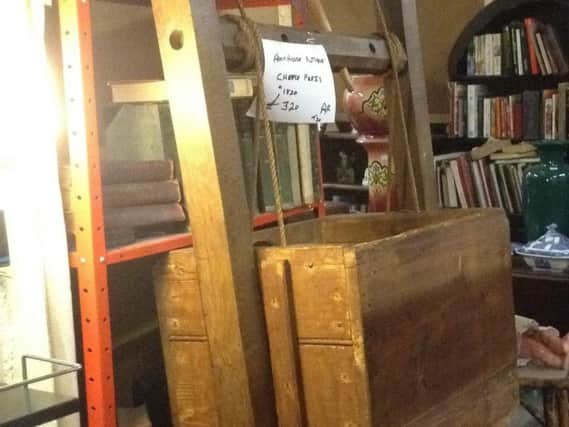There's something cheesy about these antiques...


Happy St David's Day for today (Thursday March 1). What a great opportunity to celebrate the burgeoning bounty of nature, no more so than with a favourite treat of mine that the Welsh are famous for – cheese!
READ MORE: Memorabilia from the world of music
Advertisement
Hide AdAdvertisement
Hide AdA foodstuff so good, no less, that Welsh cheeses were once allocated as part of divorce settlements.
And with the abundance of rich milk from fresh spring grass, for those living in rural communities pre-mechanisation, this extraordinary item would have been heavily relied on for its labour-saving benefits. This is an original farmhouse cheese press which is a rare example as it is in remarkably fine condition for its vintage (circa 1820), especially considering the hard labour to which it was put.
The production of cheese predates recorded history. Cheese as we recognise it was ‘invented’ accidentally through the transportation of milk in bladders made of cattle’s stomachs.
This fortuitously introduced rennet or enzymes to the mixture, which enabled the curds and whey to separate.
Advertisement
Hide AdAdvertisement
Hide AdFor centuries, cheesemaking was a labour-intensive activity of heating, stirring and straining. This made a cheese press like this a godsend, allowing liquid to be squeezed out of the cheese with far more efficiency and force than straining by hand. More cheese could be produced with a stronger flavour and longer shelf-life.
So who collects large, specialist items like this? You might be surprised… For those with the room – or a cheese habit to rival Wallace and Gromit – there’s a keen section of the collecting market seeking agricultural and industrial ‘bygones’, like hay racks and small ploughs, hedging hooks, harrows, milk-churns and millstones.
And with a little flair – and elbow grease – ‘bygones’ can even find practical use in the modern home.
The humble butcher’s block (the more worn the better) is now incredibly sought after to grace the kitchen, increasing numbers of people come to us for old stepladders to convert into bookshelves, large travel trunks that can be made into coffee tables and apparently mangles are the new eco-accessory for those looking to replace the tumble drier.
So Happy St David’s Day, maybe this ‘rarebit’ of history has you reaching for the cheese knife!